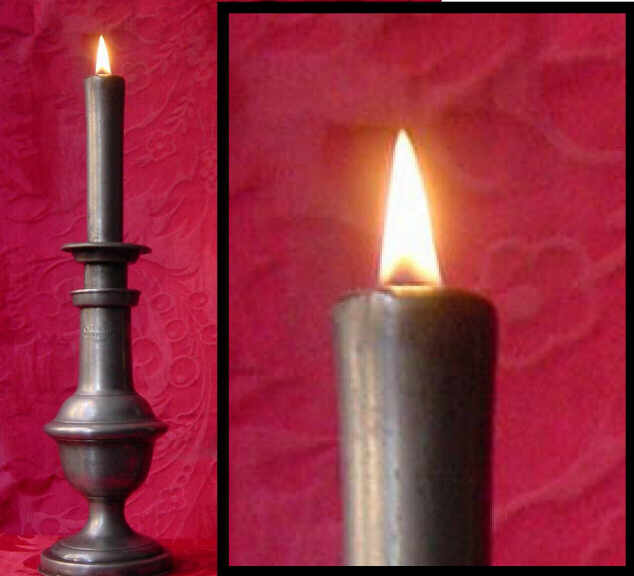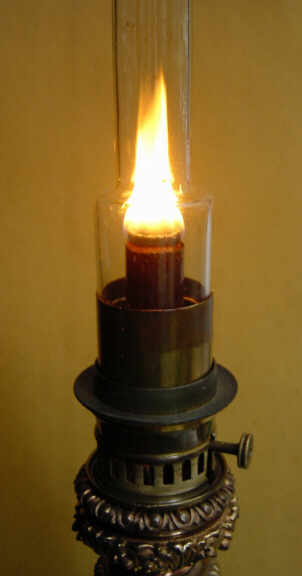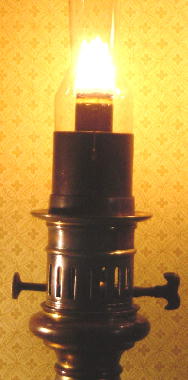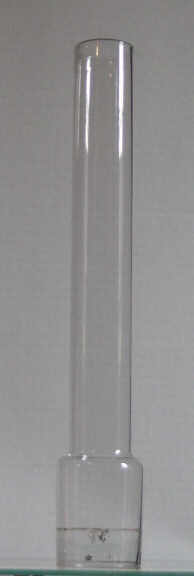|
In the so-called "pump-lamp", the main container is located in the bulge at the base of the lamp. Small amounts of oil are pumped by hand (pressing the "candle" several times) to the small container at the top of the tube below the burner. The wick is flat and yields as much light as several candles. From 1775 on. |
 |
   |
The tubular wick lets air flows to the flame bot from outside and from inside of the circle. The chimney creates additional draft for a better air supply. By introducting both novelties about 1782, Ami Argand revolutioned the lighting techniques of his time. The oil container had to be kept away from the burner
to avoid shadow: |
|
The solar-lamp, introduced around 1840, has its container just under the burner and throws undesired shadow below itself. The metal-ring encircling the flame stretches the flame in height. This detail can be considered as the forerunner of the constriction found later in the Kosmos-chimney of kerosene-lamps.
|
  |